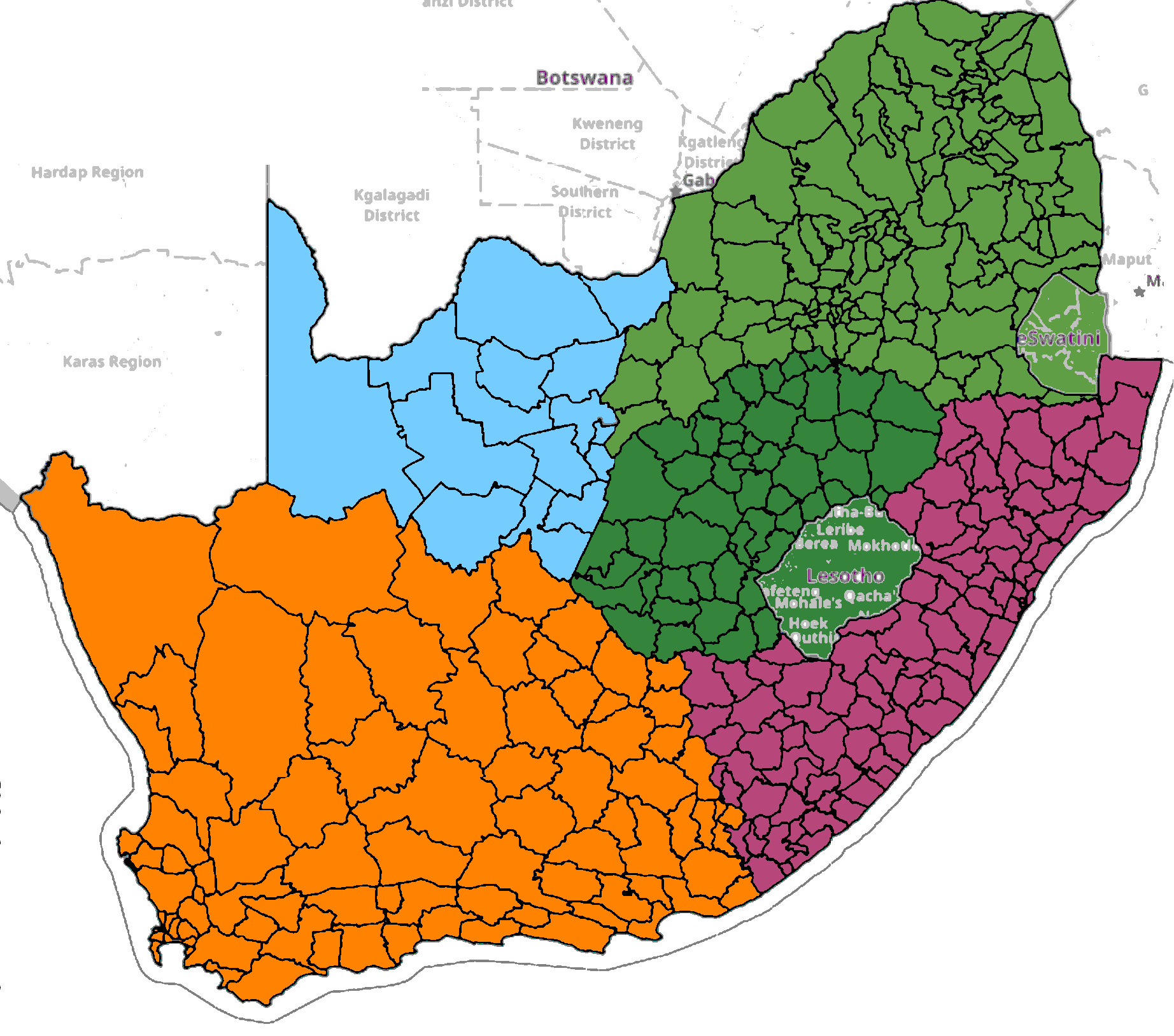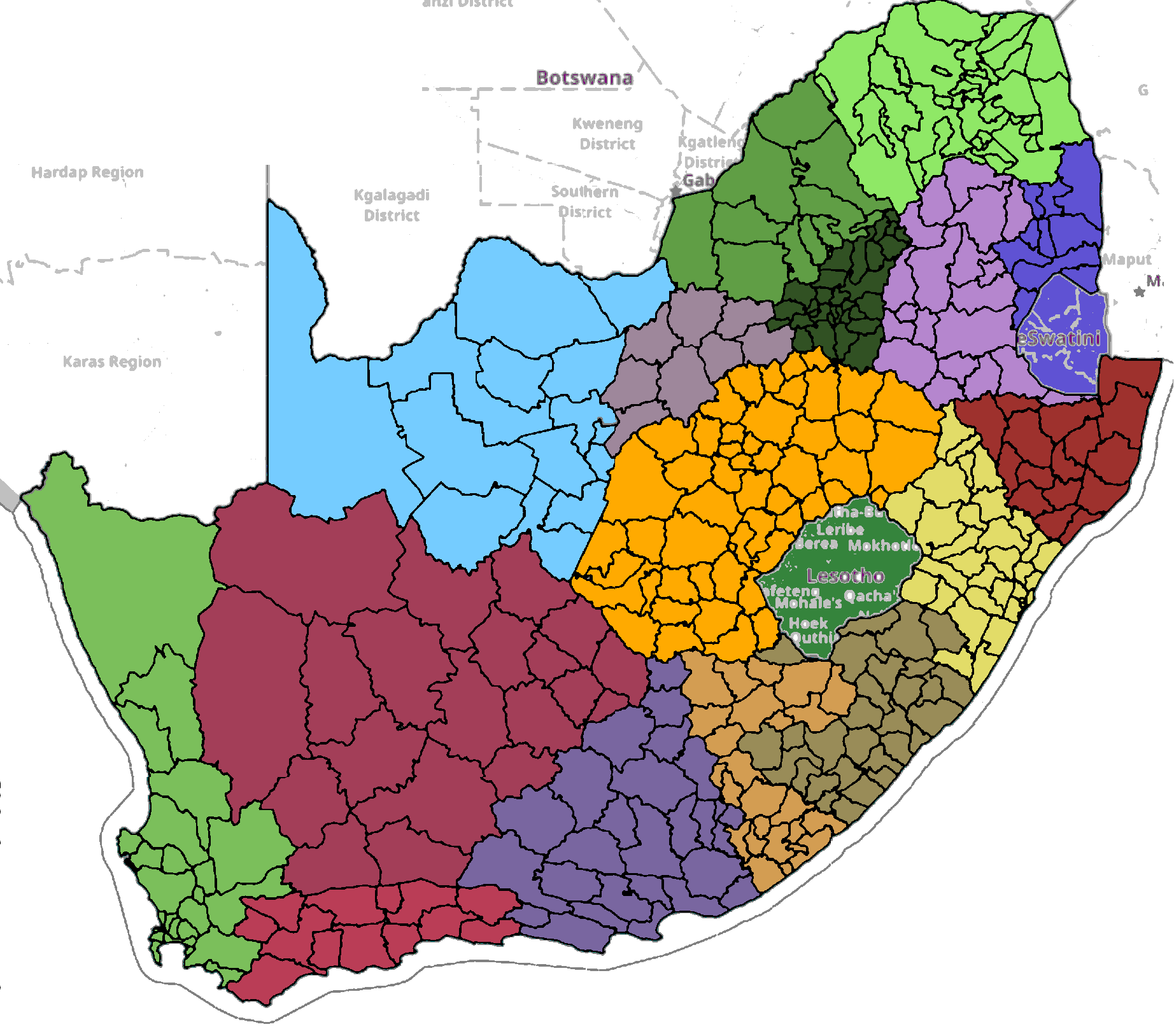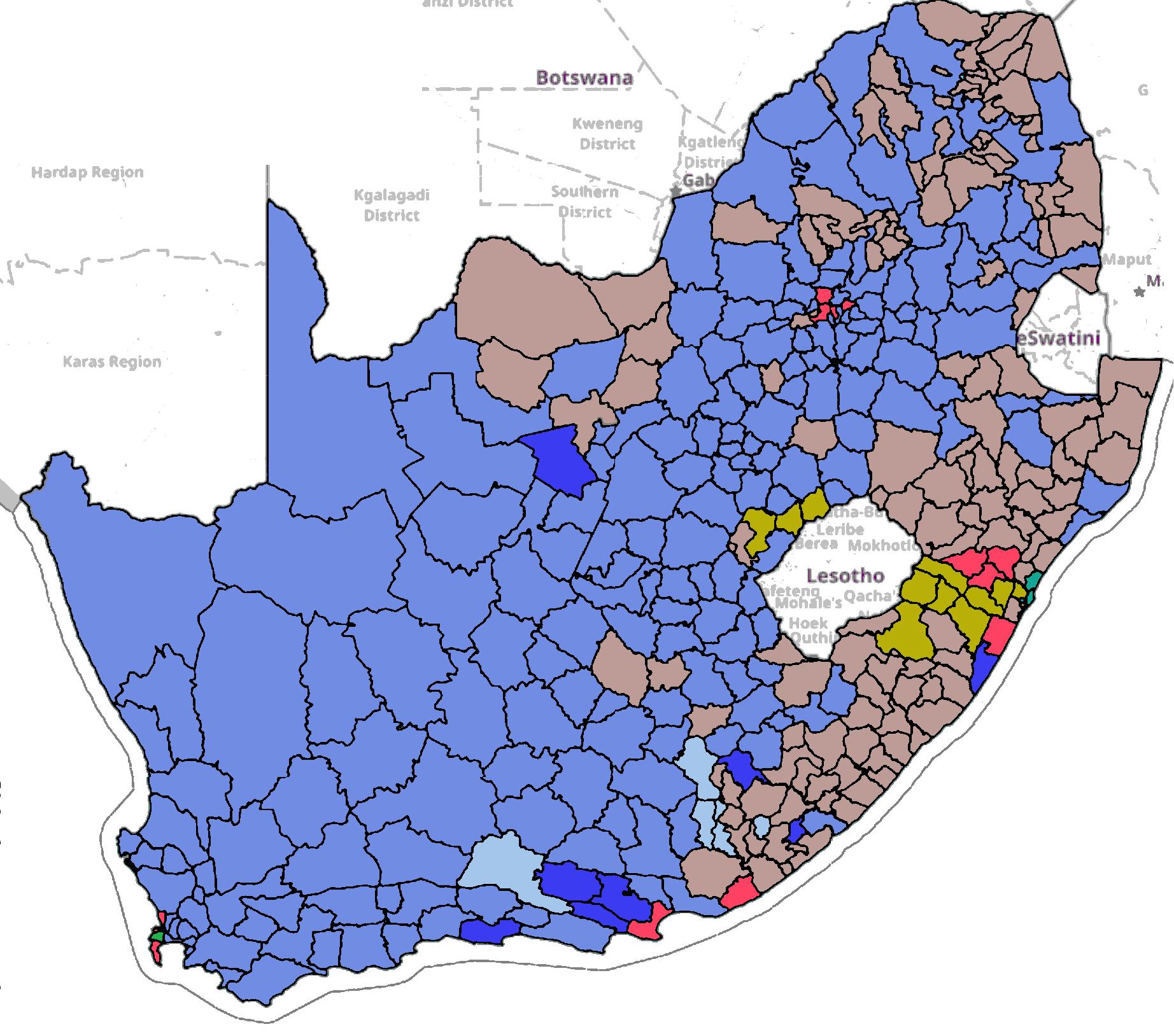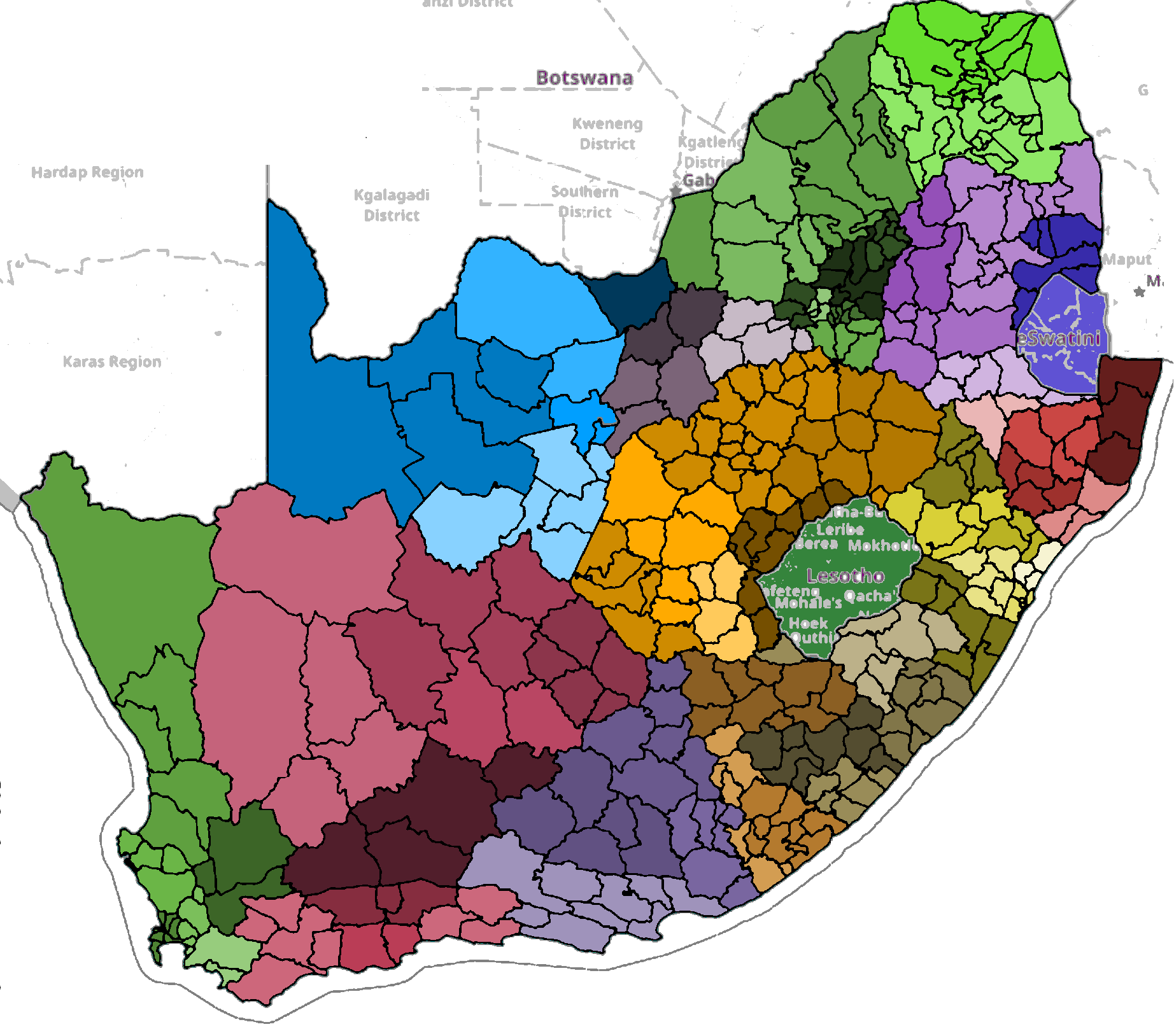In portraying accurately the different societies of South Africa, there we need to mod the governmnents.
Firstly, there will be a "Republic" form of government, representing the Boer´s favoured form of government. Man,they established Republics wherever they went. The Boers were predominatly farmers and were not as numerous. Their farms can be portrayed as castles and their government can be just called feudalism under a different name. (Green)

Secondly, we have the Tribal governmnet, which is to portray both the Black and Bantu peoples´ societies. Townships are added here as well (Soweto). Tribal is not going to change in any gross way from the main game.
Thirdly, there shall be "Urban" government, shown in pink- this will depict counties where a cosmopolitan attiude prevails and are major industrial centres...
Fourthly. There ought to be a "Colonial Government", based upon interactions with Off-Map power, Great Britain.
Possibly, a fifth governmnet, called "Democracy" ....to represent the "Rinbow Nation" since CODESA
Firstly, there will be a "Republic" form of government, representing the Boer´s favoured form of government. Man,they established Republics wherever they went. The Boers were predominatly farmers and were not as numerous. Their farms can be portrayed as castles and their government can be just called feudalism under a different name. (Green)

Secondly, we have the Tribal governmnet, which is to portray both the Black and Bantu peoples´ societies. Townships are added here as well (Soweto). Tribal is not going to change in any gross way from the main game.
Thirdly, there shall be "Urban" government, shown in pink- this will depict counties where a cosmopolitan attiude prevails and are major industrial centres...
Fourthly. There ought to be a "Colonial Government", based upon interactions with Off-Map power, Great Britain.
Possibly, a fifth governmnet, called "Democracy" ....to represent the "Rinbow Nation" since CODESA





